| Home Page | New Data | Chronology | Cast Coins | Struck Coins | Paper Money | Links/Reference |
( 1661 ~ 1722 A.D. )
|
In 1661, The young Shun Chih Emperor caught smallpox and passed
away. His third son, Hsuan Yeh
* |
Extremely Rare A ~ Very Rare B ~ Rare C ~ Not So Many D ~ Common E
| Obverse | Reverse | Description |
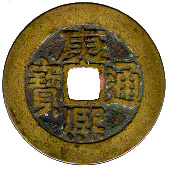
|
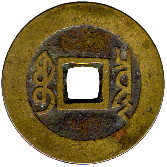
|
No. 0066 |
| Mint: Peking | ||
| Diam. 27 mm | ||
| Wt. 4.8 g. | ||
| Rareness E | ||
| Mint Evolution and Peculiarity | ||
|
The Hu-pu Pao Ch'uan Chu |
||
| Obverse | Reverse | Description |
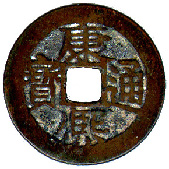
|
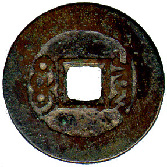
|
No. 0067 |
| Mint: Peking | ||
| Diam. 23 mm | ||
| Wt. 3.6 g. | ||
| Rareness E | ||
| Mint Evolution and Peculiarity | ||
| This coin was cast by the Hu-pu Pao Ch'uan Chu too. It is about 1 mace in weight, so that I know this coin was cast in the period between 1684 to 1702. | ||
| Obverse | Reverse | Description |
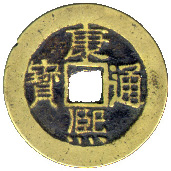
|
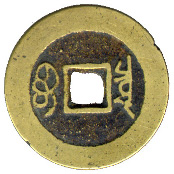
|
No. 0068 |
| Mint: Peking | ||
| Diam. 27.5 mm | ||
| Wt. 5.7 g. | ||
| Rareness D | ||
| Mint Evolution and Peculiarity | ||
|
This coin was cast by the Hu-pu Pao Ch'uan Chu |
||
| Obverse | Reverse | Description |
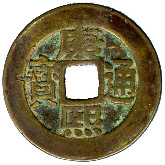
|
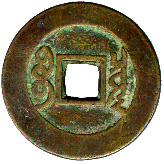
|
No. 0069 |
| Mint: Peking | ||
| Diam. 26 mm | ||
| Wt. 4.8 g. | ||
| Rareness D | ||
| Mint Evolution and Peculiarity | ||
|
On the obverse of this coin, we find that the left hand vertical
stroke of the Chinese character Another famous copper cash used as charm is "Kuan Tao Chien", Yung Zheng T'ung Pao, Part C, Coin No. 009 and No. 010. |
||
| Obverse | Reverse | Description |
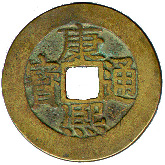
|
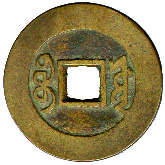
|
No. 0070 |
| Mint: Peking | ||
| Diam. 26.5 mm | ||
| Wt. 4.7 g. | ||
| Rareness E | ||
| Mint Evolution and Peculiarity | ||
|
This coin was cast by the Kung-pu Pao Yuan Chu |
||
| Obverse | Reverse | Description |
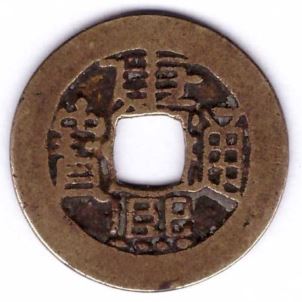
|
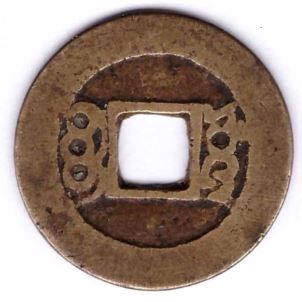
| No. 0070B |
| Mint: Peking | ||
| Diam. 22.6 mm | ||
| Wt. 3 g. | ||
| Rareness E | ||
| Mint Evolution and Peculiarity | ||
| This coin was another cash coin cast by the Kung-pu Pao Yuan Chu in Peking. This cash coin weighs 3 grams only. It is a light cash (normally weighs 7 candareens, about 2.611 gram.), known as 七分錢 (means cash coin weighs 7 candareens.) by the Chinese collectors. It was first cast in the 41st year of K'ang Hsi reign (1702AD). | ||